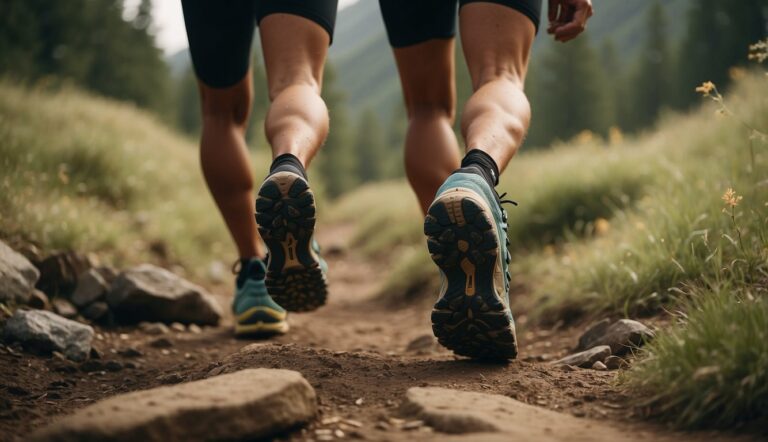Trail Safety Tips: Essential Guidelines for Outdoor Adventurers
Exploring the trails can be a rewarding experience, but safety should always be a top priority. As a UESCA certified running coach, I’ve seen firsthand the importance of being properly prepared before hitting the trail. Whether you’re planning a leisurely walk or a challenging hike, knowing your limits and planning your route can make all the difference.
It’s critical to equip yourself with the right gear, including appropriate footwear, and ensure you stay hydrated by carrying extra water. Many people overlook the necessity of having sufficient resources, but being over-prepared is far better than the alternative, especially on unfamiliar or challenging trails.
To enhance your hiking safety, it’s also vital to be aware of the weather conditions and sunset times. Abrupt changes in weather can make trails treacherous, and losing daylight increases the risk of losing your way. My experience has taught me that these precautions are not just suggestions but essential steps in a thorough safety regimen for any trail adventure.

Preparing for the Hike
To ensure a safe and enjoyable hiking experience, thorough preparation is essential. By checking the weather, planning your route, and packing the essentials, you’re setting the stage for a successful hike.
Check the Weather
Before heading out, it’s crucial to look at the weather forecast for your hiking area. Severe weather can turn a trail from pleasant to perilous. If the forecast predicts unfavorable conditions, it may be wise to postpone your trek. Always be prepared for weather changes by carrying appropriate gear.
| Weather Condition | Suggested Gear |
|---|---|
| Sunny | Sun protection (hat, sunglasses, sunscreen) |
| Rain | Waterproof jacket and protective pack cover |
| Cold | Insulated layers, gloves, and a beanie |
| Variable | Layered clothing to adjust as needed |
Plan Your Route
Knowing the start and end points, terrain, and estimated duration of your hike is key to staying safe. I advise creating an itinerary that includes all these details and sharing it with someone who’s not on the hike. Also, have a clear emergency plan in place, including knowing how to contact local authorities if necessary.
| Trail Aspect | Description |
|---|---|
| Starting Point | Exact location where the hike will commence |
| Destination | Final point or turnaround spot |
| Terrain | Type of path and elevation changes expected |
| Duration | Estimated time to complete the hike |
Pack the Essentials
The “10 Essentials” is a time-honored list of survival and first aid items critical for hiker safety. Make sure you have enough food and extra water—which is particularly vital—to last longer than your planned hike. Presence of mind to pack and skill in using these tools can significantly affect your trail safety.
The 10 Essentials:
- Navigation: map and compass or GPS
- Sun protection: sunscreen, hat, and sunglasses
- Insulation: extra layers for warmth
- Illumination: headlamp or flashlight
- First-aid supplies: well-stocked first aid kit
- Fire: matches, lighter, and fire starter
- Repair tools: knife, gear repair kit
- Nutrition: extra food
- Hydration: extra water and water treatment method
- Emergency shelter: tent, bivy sack, or reflective blanket
Always remember, a well-packed backpack is your lifeline on the trail.
During the Hike

When out on a hike, staying alert, hydrating regularly, and navigating with precision are the cornerstones of a safe outdoor adventure. Read on to ensure a memorable hiking experience, free of unnecessary dangers.
Stay Alert
As a UESCA certified running coach and hiking enthusiast, I can’t stress the importance of remaining vigilant enough. It’s vital to be aware of your surroundings at all times to spot any potential hazards. This includes keeping a lookout for local wildlife such as bears, snakes, mountain lions, and coyotes, which may cross your path. Maintain a safe distance from any animals you encounter and know how to respond if they approach you.
- Bears: Make noise to avoid surprising them; carry bear spray.
- Snakes: Stay on the trail; watch where you step or reach.
- Mountain Lions: Do not hike alone; avoid dusk and dawn.
- Coyotes: Do not feed; keep a firm, calm presence.
Hydrate and Eat
Dehydration can sneak up on you, complicating your hike and impacting your health. I always recommend bringing extra water than what you think you’ll need, plus some. Adequate food is also essential to keep your energy levels up. Pack snacks that offer a good mix of protein and carbohydrates.
- Water: At least one liter per two hours of hiking.
- Snacks: Energy bars, mixed nuts, fruit, or jerky.
Navigate Carefully
Even the most experienced hikers can lose their way, so having a reliable method to navigate is crucial. Whether you’re using trail maps or a GPS device, make sure you’re familiar with their use. Keeping to marked routes helps prevent the peril of getting lost and protects the trail ecosystem.
- Trail Maps: Always have a physical map as a backup.
- GPS Device: Ensure it’s fully charged; carry spare batteries.
- Route Awareness: Study the trail in advance; know the key landmarks.
Dealing with Wildlife

When I hit the trails, ensuring a safe and respectful encounter with wildlife is always a priority. My knowledge as a UESCA certified running coach, coupled with extensive hours spent on different trails, has taught me that preparation and awareness are key.
Prevent Tick Bites
Ticks are prevalent in many national parks and open spaces, and these tiny creatures can carry diseases. To prevent tick bites:
- Wear Long Pants: Tuck your pants into your socks or boots to minimize skin exposure.
- Use Insect Repellent: Apply a DEET-based or permethrin repellent to clothing and exposed skin.
Prevention Tips:
| Action | Description |
|---|---|
| Choose the Right Path | Stick to the center of the trail. |
| Repel Them | Use EPA-registered insect repellents. |
| Dress Appropriately | Wear light-colored clothing for visibility. |
| Inspect Regularly | Always check yourself and pets after hikes. |
Avoiding Snakes and Other Predators
Snakes, including rattlesnakes, are a concern for runners in many parks. Other predators require equal attention for safety.
- Stay Vigilant: Keep an eye out for wildlife and be aware of your surroundings.
- Make Noise: Alert animals to your presence to avoid startling them.
Safety Tips:
| Animal Encounter | Advisory Action |
|---|---|
| Snakes | Give them space; do not provoke. |
| Predatory Wildlife | Stand tall, make noise, do not run. |
| Suspicious Behavior | Back away slowly, keep eyes on the animal. |
Maintaining a respectful distance and being mindful of the environment I share with wildlife allows both me and the animals to enjoy the trails safely.
When You Need Help
In an emergency, being able to effectively signal for help or contact support can be life-saving. Prepare in advance so you can act quickly if unexpected situations arise on the trail.
Signaling for Rescue
If you find yourself in a situation where you need to be rescued, efficiently signaling for help is essential. Always carry a safety whistle; it’s a simple but powerful tool to signal distress. Three short blasts are the international distress signal. Additionally, use lights such as a flashlight or a headlamp to create visible signals at night. During daylight, brightly colored clothing or an improvised flag can make you more visible to rescuers.
Emergency Contacts
Before any hike, let someone know your plans including departure, expected return, and trail route. If you have cell service, call for help by contacting a park ranger or emergency services. Keep your phone charged and consider carrying a portable power bank. If there’s no cell service, use the previously mentioned signals to draw attention to your location.
Remember: Preparedness is a key part of trail safety.
Post-Hike Safety

After a hike, it’s important to tend to your well-being. Key post-hike steps include tick checks and managing any injuries immediately.
Check for Ticks and Injuries
As soon as the hike ends, I make it a point to thoroughly check for ticks and assess any possible injuries. This prevents potential tick-borne diseases and ensures timely treatment if needed.
Tick Check
- Clothing: Remove and inspect all layers of clothing.
- Skin: Examine all skin surfaces, paying special attention to creases and hair.
- Gear: Check your gear, as ticks can hitch a ride.
Injury Assessment
- Appearance: Look for any signs of cuts, bruises, or swelling.
- Function: Gently test your range of motion and weight-bearing abilities.
- First Aid Kit: Use your first aid kit for immediate care, and don’t hesitate to seek professional medical help if needed.
Reflect on the Experience
Reflection helps in identifying what went well and what could be improved. I consider:
- Maintenance: Clean and store gear properly for longevity.
- Safety Tips: Note any safety missteps to avoid common mistakes in future hikes.
- Hiking Experience: Analyze the route, your readiness, and how your body responded, to enhance future planning and enjoyment.
By taking these steps, I ensure my safety even after the hike is over and continuously improve my hiking experience.






